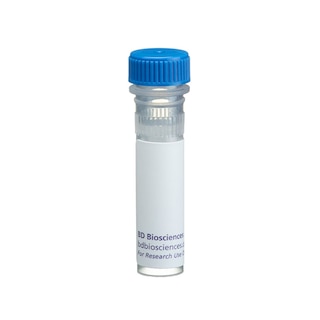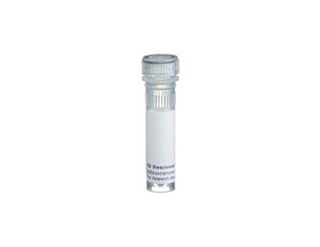-
Reagents
- Flow Cytometry Reagents
-
Western Blotting and Molecular Reagents
- Immunoassay Reagents
-
Single-Cell Multiomics Reagents
- BD® OMICS-Guard Sample Preservation Buffer
- BD® AbSeq Assay
- BD® OMICS-One Immune Profiler Protein Panel
- BD® Single-Cell Multiplexing Kit
- BD Rhapsody™ ATAC-Seq Assays
- BD Rhapsody™ Whole Transcriptome Analysis (WTA) Amplification Kit
- BD Rhapsody™ TCR/BCR Next Multiomic Assays
- BD Rhapsody™ Targeted mRNA Kits
- BD Rhapsody™ Accessory Kits
-
Functional Assays
-
Microscopy and Imaging Reagents
-
Cell Preparation and Separation Reagents
-
- BD® OMICS-Guard Sample Preservation Buffer
- BD® AbSeq Assay
- BD® OMICS-One Immune Profiler Protein Panel
- BD® Single-Cell Multiplexing Kit
- BD Rhapsody™ ATAC-Seq Assays
- BD Rhapsody™ Whole Transcriptome Analysis (WTA) Amplification Kit
- BD Rhapsody™ TCR/BCR Next Multiomic Assays
- BD Rhapsody™ Targeted mRNA Kits
- BD Rhapsody™ Accessory Kits
- United States (English)
-
Change country/language
Old Browser
This page has been recently translated and is available in French now.
Looks like you're visiting us from {countryName}.
Would you like to stay on the current country site or be switched to your country?
![Purified Mouse Anti-Serotonin Receptor 5-HT[2B]R](/content/dam/bdb/products/global/reagents/microscopy-imaging-reagents/immunohistochemistry-reagents/556xxx/5563xx/556334_base/556334Image1.png)
![Purified Mouse Anti-Serotonin Receptor 5-HT[2B]R](/content/dam/bdb/products/global/reagents/microscopy-imaging-reagents/immunohistochemistry-reagents/556xxx/5563xx/556334_base/556334Image1.png)

![Purified Mouse Anti-Serotonin Receptor 5-HT[2B]R](/content/dam/bdb/products/global/reagents/microscopy-imaging-reagents/immunohistochemistry-reagents/556xxx/5563xx/556334_base/556334Image1.png)
Immunohistochemical staining of neurons in rat brain (hippocampus) (Left Panel). A zinc-fixed, paraffin-embedded section of a rat brain was stained with 1.25 µg/mL of the Purified Mouse Anti-Serontonin Receptor 5-HT2BR antibody. Detection was performed using a Biotin Goat Anti-Mouse Ig (MN 550337) secondary and Streptavidin-HRP (MN 550946) followed by development with a DAB chromogen (MN 550880). Arrows are indicative of 5-HT2BR immunoreactivity. Western blot analysis for 5-HT2BR (Right Panel). A rat whole brain lysate was probed with 2 µg/mL (lane 1), 1 µg/mL (lane 2) and 0.5 µg/mL (lane 3) of the Mouse Anti-Serontonin Receptor 5-HT2BR antibody. The serotonin receptor 5-HT2BR is observable at 45-55 kDa with another unidentified band at 60-70 kDa.

![Purified Mouse Anti-Serotonin Receptor 5-HT[2B]R](/content/dam/bdb/products/global/reagents/microscopy-imaging-reagents/immunohistochemistry-reagents/556xxx/5563xx/556334_base/556334Image1.png)
BD Pharmingen™ Purified Mouse Anti-Serotonin Receptor 5-HT[2B]R

Regulatory Status Legend
Any use of products other than the permitted use without the express written authorization of Becton, Dickinson and Company is strictly prohibited.
Preparation And Storage
Product Notices
- Since applications vary, each investigator should titrate the reagent to obtain optimal results.
- Caution: Sodium azide yields highly toxic hydrazoic acid under acidic conditions. Dilute azide compounds in running water before discarding to avoid accumulation of potentially explosive deposits in plumbing.
- Please refer to www.bdbiosciences.com/us/s/resources for technical protocols.
Companion Products






Serotonin (5-hydroxytryptamine, 5-HT), originally discovered as a serum factor, plays an important role in regulating diverse biological processes in the central and peripheral nervous systems, the cardiovascular system and the gastrointestinal systems. The different functions of serotonin are thought to be mediated through specific receptors. Physiological, biochemical, and pharmacological studies have defined at least fourteen serotonin receptors. The fourteen receptors are grouped in seven subtypes according to operational, structural, and transductional properties. The 5-HT2 receptors (5 -HT[2A]R, 5-HT[2B]R, an d 5-HT[2C]R) may be considered as prototypes for the study of serotonin receptors . Their functions are mediated by the second messenger inositol polyphosphate in a G-protein coupled pathway. They are expressed in diverse tissues including brain, vascular smooth muscles and platelets. The 5-HT[2A]R-mRNAs have been found in only a few areas of the brain, including the frontal cortex, piriform cortex, ventro-caudal part of CA3, motor cranial nerve nuclei in the brainstem, and the ventral horn of the spinal cord. The 5-HT[2C]R mRNA has been found at high levels in many parts of the brain including retrosplenial piriform and entorhinal cortex, anterior olfactory nucleus, substantia nigra pars compacta, several brainstem nuclei and the whole grey matter of the spinal cord. The 5-HT[2B]R was cloned in stomach fundus, where it is abundantly expressed.
Development References (5)
-
Duxon MS, Flanigan TP, Reavley AC, Baxter GS, Blackburn TP, Fone KC. Evidence for expression of the 5-hydroxytryptamine-2B receptor protein in the rat central nervous system. Neuroscience. 1997; 76(2):323-329. (Biology). View Reference
-
Foguet M, Hoyer D, Pardo LA. Cloning and functional characterization of the rat stomach fundus serotonin receptor. EMBO J. 1992; 11(9):3481-3487. (Biology). View Reference
-
Humphrey PP, Hartig P, Hoyer D. A proposed new nomenclature for 5-HT receptors. Trends Pharmacol Sci. 1993; 14(6):233-236. (Biology). View Reference
-
Pompeiano M, Palacios JM, Mengod G. Distribution of the serotonin 5-HT2 receptor family mRNAs: comparison between 5-HT2A and 5-HT2C receptors. Brain Res Mol Brain Res. 1994; 23(1-2):163-178. (Biology). View Reference
-
Saudou F, Hen R. 5-Hydroxytryptamine receptor subtypes in vertebrates and invertebrates. Neurochem Int. 1994; 25(6):503-532. (Biology). View Reference
Please refer to Support Documents for Quality Certificates
Global - Refer to manufacturer's instructions for use and related User Manuals and Technical data sheets before using this products as described
Comparisons, where applicable, are made against older BD Technology, manual methods or are general performance claims. Comparisons are not made against non-BD technologies, unless otherwise noted.
For Research Use Only. Not for use in diagnostic or therapeutic procedures.